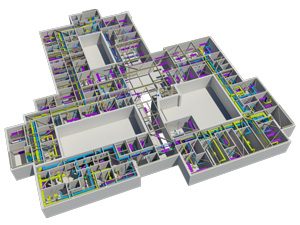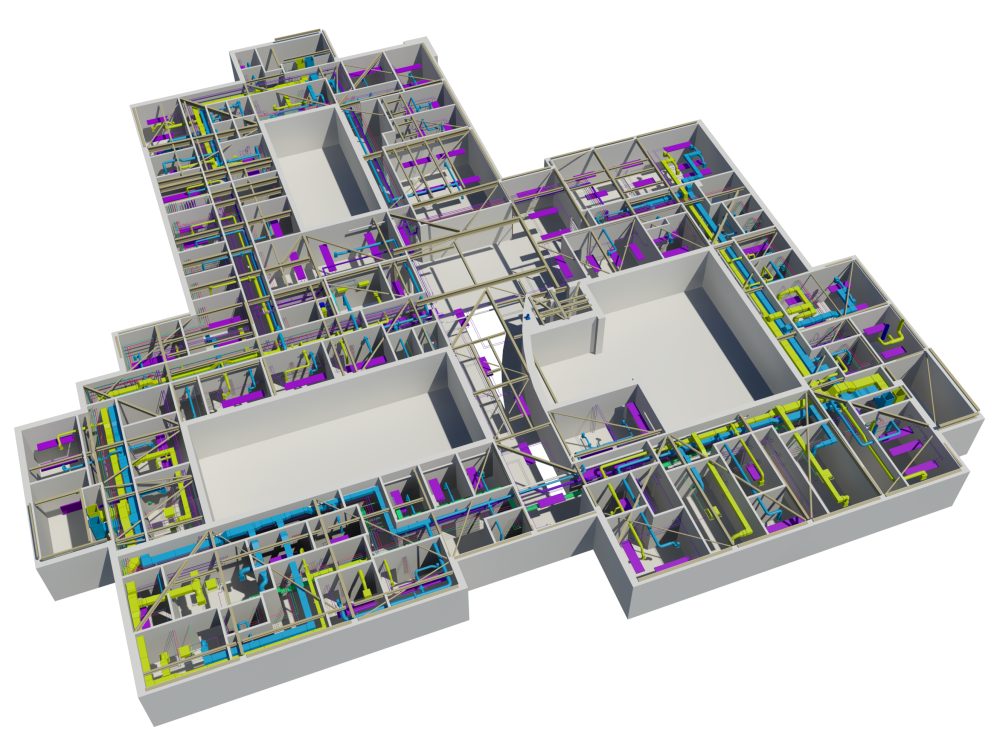If you work in construction, no doubt you will have heard of the term BIM and perhaps may even regard it as a useful tool. As a company who offer a range of BIM Services, we are aware that one of the benefits that BIM has brought to the construction industry is a more collaborative way of working. We are also aware that there is a huge variation in BIM Maturity levels throughout the industry and some people are still unaware of what BIM actually means.
For the purpose of clarity, BIM actually stands for Building Information Modelling and is a collaborative way of working based on the sharing of data and information between all the parties involved in the project. This sharing of information means that it is now much easier to manage the full building cycle, from conception to completion. However, collaboration can be at different levels depending on the project, and these are known as BIM Maturity Levels. At this moment in time, the BIM Maturity Levels we are currently working with are Level 0 (Low Collaboration), Level 1 (Partial Collaboration), Level 2 (Full Collaboration), and Level 3 (Full Integration) – with Level 3 being the goal. There is a real push in the UK to get to Level 3, with the UK Government recently publishing a mandate ensuring that all their public projects adhered to BIM Level 2 showing what a strong focus there is on this in the construction process.

The transition to Level 2 BIM and then on to Level 3 BIM will bring some important benefits to the construction industry, including:
A Boost in Productivity
Collaborative working, which is encouraged by BIM, will enable everyone involved in the project to share information more easily and more quickly. This can lead to less time spent on editing and incorporating new information which can lead to an increase in productivity. An increase in productivity will also mean higher efficiency and lower cost on the project as well.
Higher Quality Buildings
The growth of data used, partnered with the ability to manage this data at a higher precision level, means that there should be a massive increase in the quality of the buildings we see in the UK.
Such parameters as the environment and the ease of modernisation of the buildings will be much easier to take into account meaning more complex buildings which take into consideration the needs of the residents will, therefore, be designed and built.
Improvement in Clash Detection
Clash detection refers to any potential mistakes that emerge during the design and construction of the building. Building Information Modelling helps a lot with clash detection throughout the whole life cycle of the project and can, therefore, add to the efficiency of the project.
Increase in Big Data
BIM offers a great way for construction firms to be able to handle large amounts of data. The more efficient the management of big data is, the more effective the work of the people within the construction industry will be.
New Possibilities
As you can see from the above benefits, BIM can play a huge part in the total optimisation of the construction process. What this means is that the adoption of BIM may lead to the development of new markets for construction, that have previously been underserved due to the fact they did not have the right tools to expand. The fact that the project is being run as a fully collaborative model means they will be able to tackle the large number of difficulties they face on a daily basis with ease.
It is clear to see then, that the adoption of BIM within the construction industry will lead to a brighter future in many ways. To discuss the BIM Services that The CAD Room offer, and to see if we have any BIM Manager Jobs vacancies, please give us a call on 0161 427 0348 or send us an email to office@thecadroom.com

